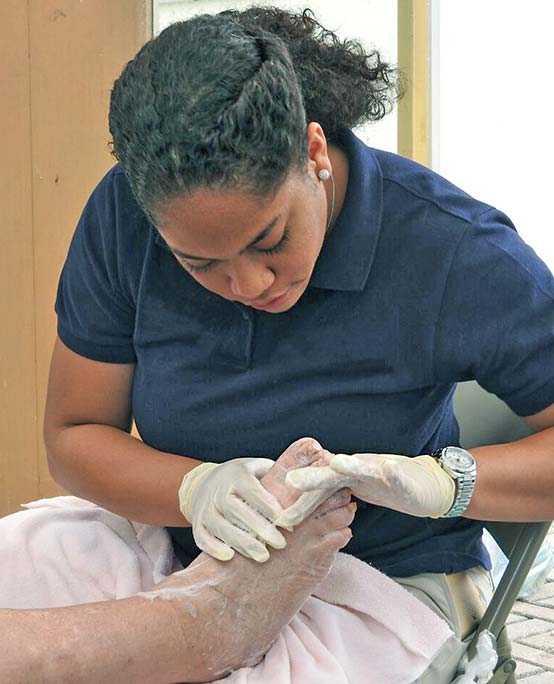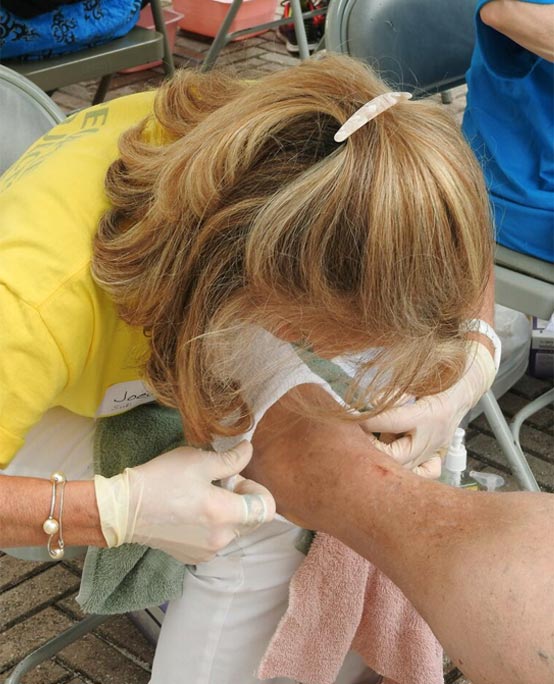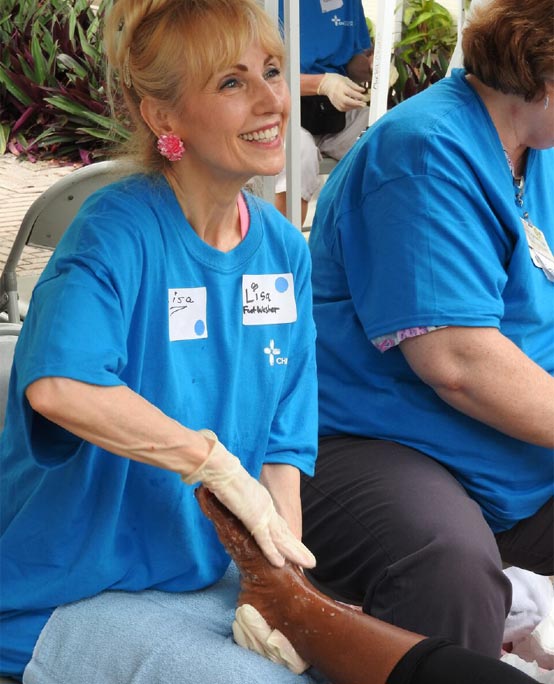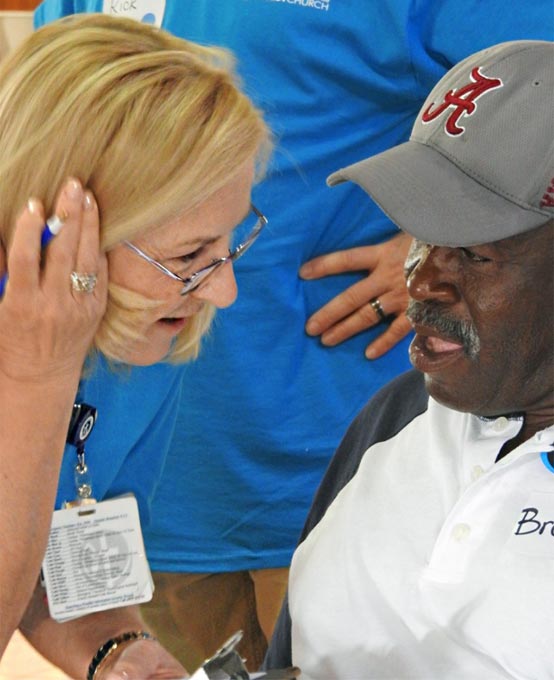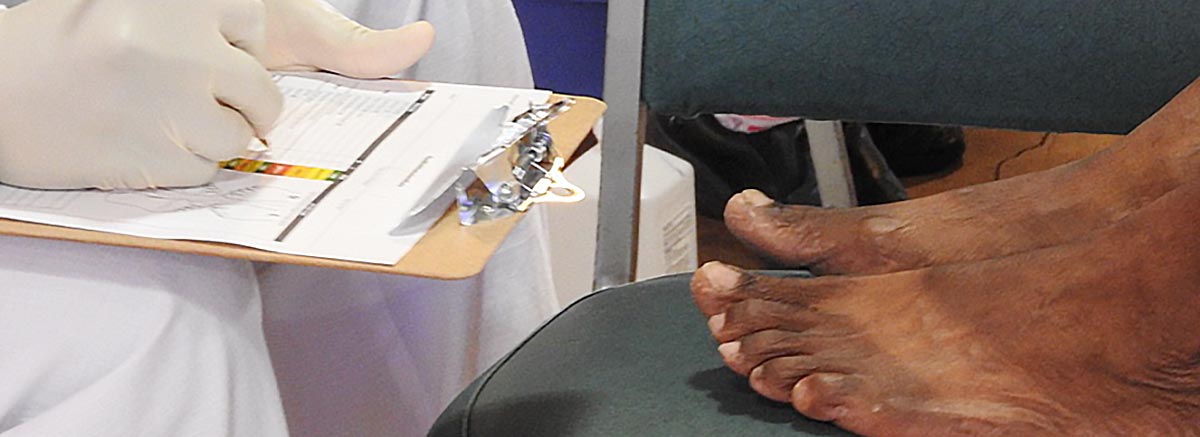Focusing on Feet Lead to Human Connections
What began as a health event to better understand foot care challenges in the homeless community has evolved into a study of human connections. The interprofessional collaboration of Andra Opalinski, Ph.D., Susan Dyess, Ph.D., both of the Christine E. Lynn College of Nursing, and Nancy Stein, Ph.D., of the Department of Anthropology, is bringing the issue into focus — using photography as the lens.
Foot problems are a common concern among people without permanent housing. To address this, the research team partnered with Holy Cross Hospital to develop a foot care event at Christ Church United Methodist in Pompano Beach that provides washing, assessments, basic care, clean socks and new shoes. Nursing students and volunteers assist with the program, serving approximately 175 individuals each year.
Along with providing much-needed services, researchers request permission to take photographs of participants in order to capture individual moments. The initial images produced findings of specific foot health challenges, such as sun exposure. Another theme that quickly emerged from the pictures was the importance of human connection.
“A visual anthropology approach has allowed for photo analysis that further informs our research, but also tells a story,” said Opalinski. “These individuals can feel very isolated and the fact that someone wasn’t afraid to touch them had an incredible impact. That was an overall phenomenon reflected in the images and also in discussions.” Dyess added, “Hearing from them that ‘it was nice being treated like a human being’ was powerful.”
To further explore the role of human connection, data collection tools for participants have been incorporated into this yearly outreach activity.
“Moving forward we’ll continue to explore how we can impact feelings of human connection and health through this forum and community care events like these,” said Opalinski.
Additionally, a portable exhibit with 50 photographs is being used as a creative way to foster a more compassionate view of people experiencing homelessness. Funded in part by FAU’s Peace, Justice and Human Rights Initiative, the display provides snapshots of the experience that translates the fieldwork of the foot care clinic into an artistic forum. This allows it to be shared with people who may not be exposed to the team’s work in traditional research avenues, such as academic articles or the book Stein co-edited, “Images and Human Rights: Local and Global Perspectives.”
“I’m intrigued by how this visual medium has an affect on different audiences and can change perceptions and soften viewpoints almost immediately,” Opalinski said.
If you would like more information, please contact us at dorcommunications@fau.edu.
